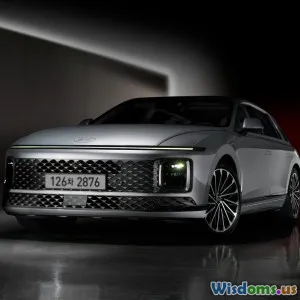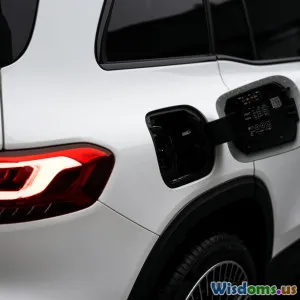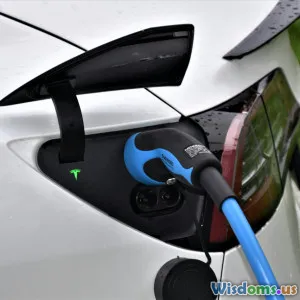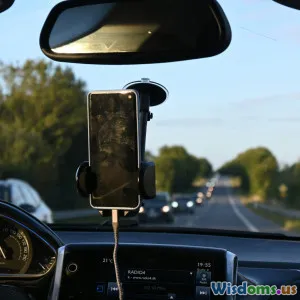
Comparing Top In Car Driver Behavior Monitors
16 min read Explore key features, benefits, and differences among top in-car driver behavior monitoring systems. (0 Reviews)
Comparing Top In-Car Driver Behavior Monitors: Making Roads Safer and Smarter
When was the last time you considered how your driving style influences safety, insurance costs, or even the longevity of your vehicle? Today’s in-car driver behavior monitors have turned the subjective art of safe driving into a science—one tracked, coached, and adapted via cutting-edge technology. Whether you’re a fleet manager looking to improve company safety records, a concerned parent overseeing a teenage driver, or a tech-savvy commuter wanting feedback on your own daily habits, the right driver monitor can make a meaningful difference.
This guide provides an in-depth look at leading in-car driver behavior monitors, comparing vital features, ease-of-use, real-world impact, and tips for maximizing value from these ingenious devices.
The Role and Rise of Driver Behavior Monitoring Systems
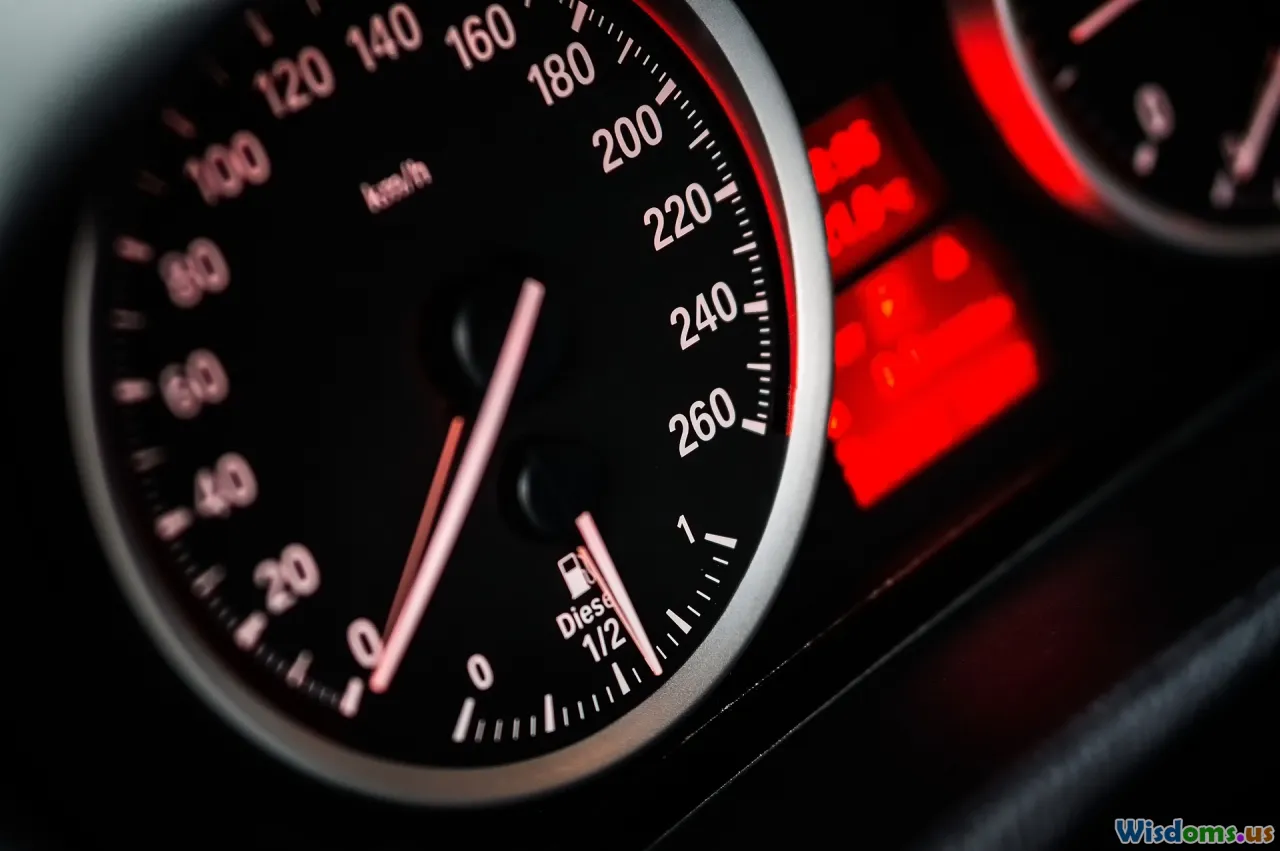
Cars of the previous generation relied largely on the honor system—your skills and caution were trusted but rarely measured. Today, driver behavior monitors use advanced sensors, GPS, and AI analytics to collect data such as acceleration, harsh braking, speed, cornering, and even distraction levels.
According to a 2023 report by MarketsandMarkets, the global market for driver monitoring systems is projected to reach $2.5 billion by 2027, underscoring the growing demand driven by insurance, fleet management, and personal safety concerns.
Modern solutions vary, from plug-and-play OBD-II devices for consumer use to sophisticated, camera-based, cloud-connected monitors for large fleets. Improvements in real-time alerts, gamified feedback loops, and seamless mobile integration have made these tools more user-friendly than ever before.
Feature Showdown: Comparing Leading Driver Monitors

Among dozens of products, a few stand out for their reliability, comprehensive features, and innovative approaches. Let’s profile four popular contenders:
1. Samsara Vehicle Telematics
Samsara is a leader in fleet management technology, and its vehicle telematics system excels in tracking driver behavior.
- Key Features: Real-time GPS tracking, harsh acceleration/braking logging, idling monitoring, in-cab alerts for unsafe driving, and AI-powered dashcams.
- Fleet Dashboard: Managers get granular, customizable reports highlighting risky behaviors and improvement trends across all vehicles.
- Example Use: Best suited for commercial fleets (e.g., delivery or public transport companies), some operators have reported a 50% reduction in accident rates after implementation, attributed to real-time feedback and proactive coaching.
2. Verizon Connect Reveal
Verizon Connect Reveal is another major fleet-centric choice, putting usability and insightful analytics at its core.
- Key Features: Trip timelines, detailed driver scorecards, speeding & geofencing alerts, engine diagnostics, and automated reports.
- Mobile Access: Supervisors and drivers alike can access trip summaries, receive tips, and visualize trends on smartphones.
- Example Use: Used by landscaping and construction companies to optimize routing and encourage fuel-efficient, safe driving resulting in significant savings on insurance premiums and fuel usage.
3. Garmin DriveSmart 76
Unlike subscription-based enterprise products, Garmin’s DriveSmart 76 is a retail device that blends consumer-oriented navigation with driving safety features.
- Key Features: Forward collision and lane departure warnings, photo-real junction views, voice-activated navigation, and driver fatigue alerts.
- No Subscription: Once purchased, there are no recurring fees—a plus for personal users or small businesses.
- Example Use: Ideal for drivers looking to supplement an older car with the intelligence of modern safety systems, especially in urban environments with heavy congestion.
4. Nauto Driver & Fleet Safety Platform
Nauto brings artificial intelligence and edge computing to bear against distracted driving—a top cause of road incidents.
- Key Features: Dual-facing dashcams, machine vision for distraction/drowsiness detection, contextual in-cab alerts, post-trip video review.
- AI Training: The system learns from vast datasets to distinguish between daydreaming, cellphone use, or simple glances.
- Example Use: Tech-forward enterprises with high-value or high-liability fleets; many have documented up to an 80% decrease in risky driver behaviors after onboarding.
Core Assessment Criteria: What Truly Matters?
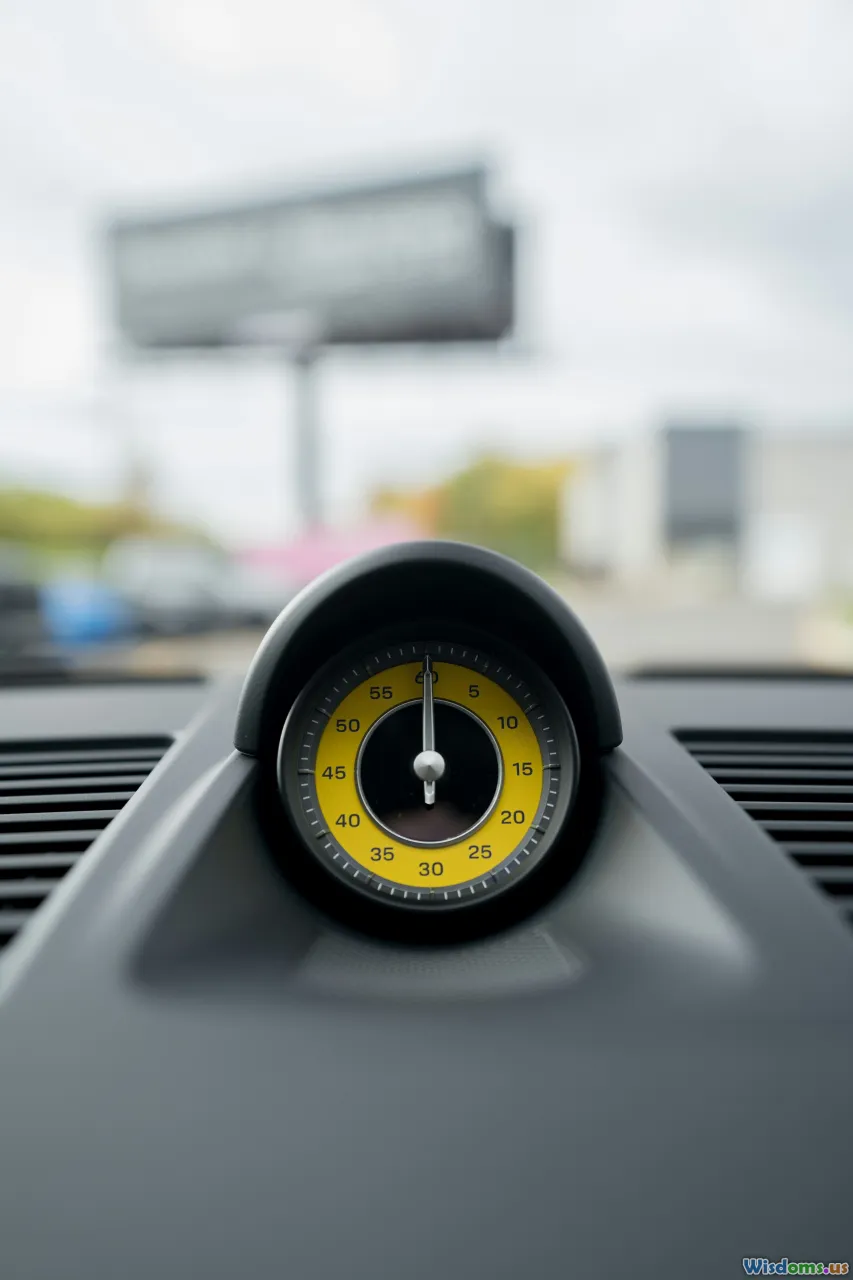
Selecting a solution involves more than price and brand recognition. Here are pivotal criteria and why each matters:
1. Data Granularity and Real-Time Feedback
- Why It Matters: The more specific and immediate your feedback, the faster drivers improve. Real-time, in-cab alerts turn bad habits into teachable moments, while weekly summary reports help identify larger trends.
- Example: Samsara’s instant beeps for harsh turns reduce on-the-spot risk, while Reveal’s detailed post-trip reports make monthly performance reviews objective and actionable.
2. User Experience and Interface
- Why It Matters: If feedback is hard to access or understand, drivers resist or ignore it. Platforms with intuitive mobile apps and dashboards ensure that everyone, from trainees to tech-averse drivers, gets the message.
- Example: Verizon’s mobile-centric design enables on-the-fly checks for both drivers and managers.
3. Artificial Intelligence and Predictive Analytics
- Why It Matters: In-cab AI can detect subtle errors, like micro-sleep or momentary distraction, that basic telematics miss.
- Example: Nauto’s AI flags potential issues even before an incident develops, outpacing traditional, after-the-fact analytics.
4. Customization and Scalability
- Why It Matters: Every fleet has unique risks. Systems that allow custom thresholds (e.g., varying speed or event definitions) or scale from five to five hundred vehicles offer true long-term value.
- Example: Samsara’s backend can configure to distinguish between urban stop-and-go and rural high-speed traffic profiles.
5. Privacy & Data Security
- Why It Matters: Sensitive data (videos, geo-location) require encryption, proper storage, and strict access controls to prevent abuses and comply with regulations like GDPR.
- Example: Enterprise solutions like Nauto and Samsara feature robust multi-point authentication and encrypted transmission by design.
Case Study: Driver Monitors in Action

Let’s explore a practical deployment: Consider a last-mile delivery firm operating across North America. Prior to deploying a driver behavior monitoring system, the company faced recurring issues—mostly minor accidents and high vehicle maintenance costs linked to rough handling.
The firm chose Samsara, integrating plug-in OBD devices and AI dashcams across its 120-van fleet. Within six months, quarterly accident rates dropped by 35%, and harsh events (rapid acceleration/braking) declined by almost half. Maintenance intervals stretched further, and fuel consumption improved. Perhaps most transformative was the accountability boost: Drivers appreciated weekly reports and driver-of-the-month incentives tied directly to safe driving data.
Notable insights:
- Speeding infractions during night shifts fell once drivers received real-time alerts and saw their scores posted among peers.
- GPS logs and engine diagnostics pinpointed underused or inefficient routes, allowing route optimization and overtime reduction.
All together, the $65,000 annual investment in telematics and coaching generated over $185,000 in savings plus a dramatic reduction in customer complaints.
The Consumer Angle: Empowering Everyday Drivers

While firms may see the most immediate ROI, everyday drivers stand to gain in safety and savings, especially when integrating monitors for young drivers or families.
Devices like the Garmin DriveSmart 76 bring modern safety features into older cars—think forward collision, lane keep alerts, and voice guidance—without requiring a new car purchase.
For parents, OBD-II connected devices (e.g., HUM by Verizon, or Automatic Pro) can:
- Send instant texts if teens speed, brake abruptly, or drive outside of geofenced zones.
- Create driving journals, gamifying safe behaviors for insurance discounts.
- Offer crash response and vehicle diagnostic help in emergencies.
One notable case: After installing a HUM monitor, a California family saw their teen’s insurance premium drop 18% in a year, thanks to verifiable safe driving logged and shared with their insurer.
Application in Insurance: The Telematics Revolution

Modern insurance companies increasingly leverage data from telematics to offer usage-based auto insurance (UBI), personalizing rates based on actual rather than presumed driving habits.
Snapshot™ from Progressive and Allstate’s Drivewise® are prime examples. After plug-in installation, every trip is documented: braking, accelerating, time of day, and speed versus local limits. Good behavior (safe, smooth, low-mileage driving) brings discounts up to 30% off standard rates.
Privacy concerns are mitigated by users agreeing to what data is shared and how it's used. While not everyone enjoys being tracked, the trade-off in savings and assurance has encouraged millions of drivers in North America and Europe to embrace telematics.
Integration with Smart Mobility and Future Vehicles

Driver behavior monitors aren’t just standalone safety gadgets—they’re contributors to the future of transportation.
For semi-autonomous and forthcoming fully-autonomous vehicles, driver monitoring systems ensure that human caretakers remain alert, ready to intervene if necessary. Eye-tracking sensors in premium cars (e.g., BMW's Extended Traffic Jam Assist or Cadillac’s Super Cruise) track gaze to prompt the driver when hands-off operation may no longer be safe.
Further, as cities build out vehicle-to-everything (V2X) infrastructure, collective datasets from millions of rides can identify and flag hazardous intersections, optimizing public road design and signaling for all travelers. The same edge-AI models that spot drowsy employees in trucks will learn to interpret risk factors and environmental patterns for mass mobility services.
Overcoming Challenges: Implementation, Resistance & Cost
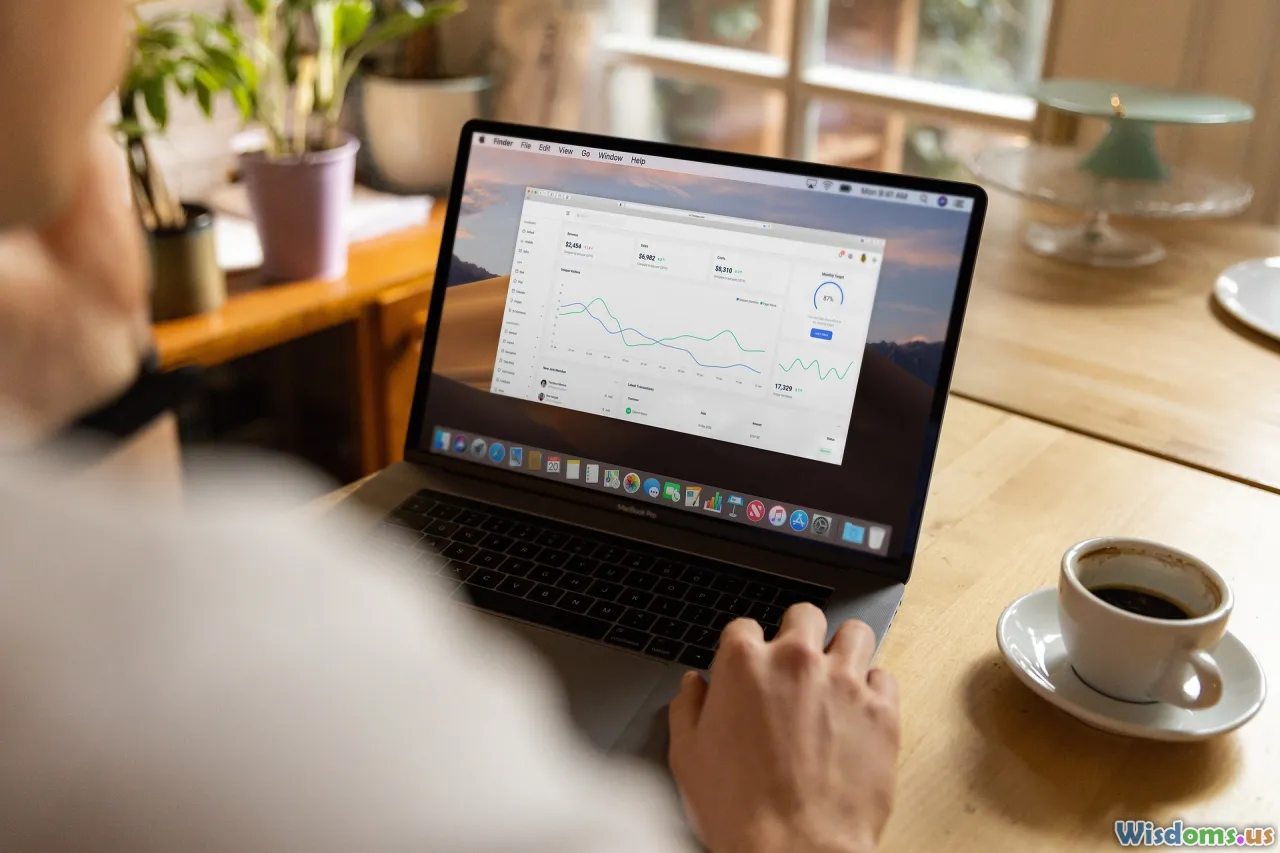
Deployment of behavioral monitors occasionally faces friction:
- Driver Skepticism: Some may see monitoring as punitive or an invasion of privacy. Transparent communication, emphasizing safety and constructive incentivization, eases concerns.
- Installation Complexity: While most OBD-II or SIP kits are plug-and-play, camera-based and AI-assisted monitors (like Nauto) require calibrated installation. Firms may need professional help for initial setups.
- Cost vs Value: Enterprise systems cost more up front but can pay for themselves in accident reduction, maintenance savings, and insurance discounts. For individuals, non-subscription options like Garmin make basic features more accessible.
Success stories consistently cite top-down commitment to the program, clear policies on data access and use, and training sessions as keys to widespread adoption and meaningful safety improvements.
Making the Right Choice: A Quick Decision Guide

Here’s a summary checklist to guide your final decision:
- Do you run a fleet or need personal feedback? B2B systems (Samsara, Verizon Connect, Nauto) outperform in fleet risk management, while consumer-focused monitors (Garmin, HUM) suit families and individuals.
- Do you need AI-powered video monitoring? If distracted driving and incident review is vital, opt for platforms with dashcam and machine vision.
- How much ongoing management or coaching do you seek? Systems with automated driver scoring, mobile alerts, and configurable events deliver more value—if you have the time to leverage insights.
- What’s your budget and comfort with subscriptions? Personal devices often have up-front costs, while commercial systems charge per month, per vehicle.
Consider trialing two products side-by-side in your context to find your best balance of insight, usability, and ROI.
Driver behavior monitors have graduated from gadgets for insurance discounts into pillars of modern road safety and operations management. By choosing a system that fits your driving—whether at work, at home, or anywhere in between—you’re taking the wheel not just to reach your next destination, but to help pave the way for safer journeys everywhere.
Rate the Post
User Reviews
Popular Posts











